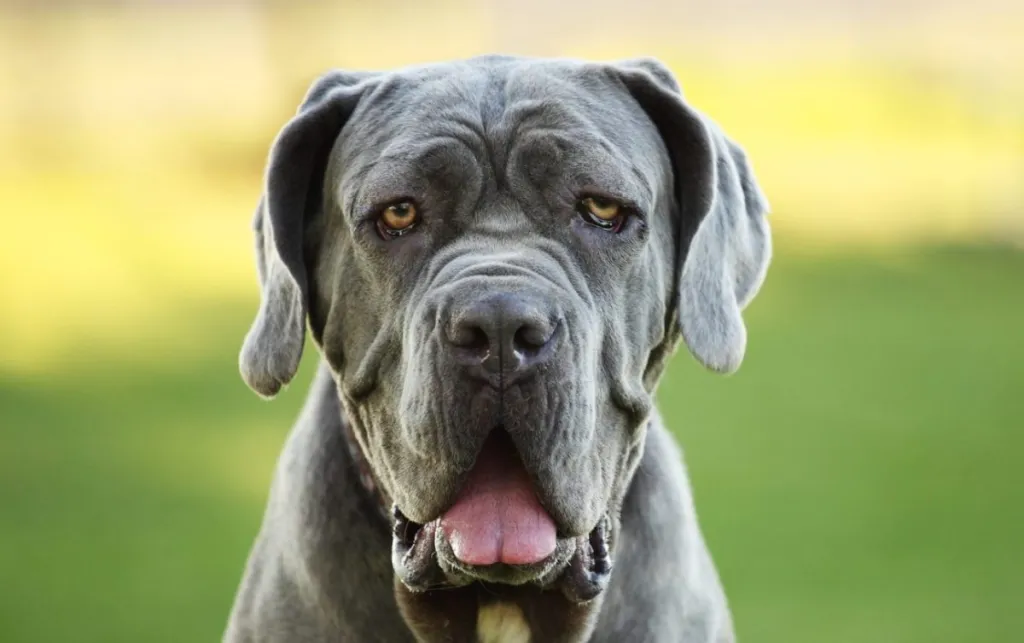Welcome to our comprehensive guide on the Neapolitan Mastiff, a breed known for its massive size, distinctive wrinkles, and unwavering loyalty. Join us as we dive into the origins, unique characteristics, care essentials, training insights, and health considerations of this ancient Italian breed. Whether you’re captivated by their imposing appearance or considering bringing one into your home, get ready to explore everything you need to know about the formidable yet gentle Neapolitan Mastiff!
Origins and History of the Neapolitan Mastiff
Ancient Guardian of Italy
The Neapolitan Mastiff, or Mastino Napoletano in Italian, boasts a rich history dating back to ancient Rome. Bred as guardians and protectors of estates, homes, and livestock, their formidable presence and unwavering loyalty made them prized companions and formidable guardians.
Development and Popularity
Originally from the Naples region of Italy, Neapolitan Mastiffs were used in various roles over the centuries, including war dogs and gladiatorial combatants. Their distinct appearance, with loose skin and deep wrinkles, helped protect them from bites during their duties.
Physical Characteristics of the Neapolitan Mastiff
A Giant Among Dogs
Neapolitan Mastiffs are among the largest dog breeds, with males typically standing 26 to 31 inches tall at the shoulder and weighing 150 to 200 pounds. Females are slightly smaller but still impressively large and muscular.
Unique Features
- Droopy Skin and Wrinkles: One of the most distinctive traits of the Neapolitan Mastiff is their abundant loose skin and wrinkles, especially around the face and neck, which serve to protect vital areas during confrontations.
- Powerful Build: They have a powerful, muscular build, with a broad chest and strong legs that convey their strength and endurance.
- Short Coat: Their coat is short and dense, coming in solid colors such as gray, black, tawny, or mahogany. Minimal grooming is required, focusing mainly on regular brushing and occasional baths.
Temperament and Behavior
Gentle Giants
Despite their imposing size and protective instincts, Neapolitan Mastiffs are known for their calm and gentle demeanor with their families. They are affectionate, loyal, and deeply devoted to their owners, often forming strong bonds that last a lifetime.
Protective Instincts
Bred as guardians, Neapolitan Mastiffs are naturally protective of their home and family. They are wary of strangers and have a strong sense of territory, making them excellent watchdogs. Early socialization is crucial to ensure they are well-adjusted and can differentiate between threats and normal interactions.
Training Your Neapolitan Mastiff
Firm Yet Gentle Guidance
Training a Neapolitan Mastiff requires a firm yet gentle approach due to their sensitive nature. They respond well to positive reinforcement techniques such as praise, treats, and consistent commands. Early obedience training and socialization help them develop good manners and control their natural guarding instincts.
Exercise Needs
Despite their large size, Neapolitan Mastiffs do not require excessive exercise. They benefit from daily walks and moderate activity to maintain their muscle tone and mental stimulation. Avoid strenuous exercise during their growth phase to prevent joint issues common in large breeds.
Health Considerations
Common Health Issues
While generally robust, Neapolitan Mastiffs may be prone to certain health conditions, including:
- Hip Dysplasia: A genetic condition affecting the hip joints, leading to pain and mobility issues.
- Elbow Dysplasia: Similar to hip dysplasia, affecting the elbows and causing discomfort.
- Bloat (Gastric Dilatation-Volvulus): A serious condition where the stomach fills with air and twists, requiring immediate veterinary attention.
Regular Veterinary Check-ups
Routine veterinary care, including annual check-ups, vaccinations, and preventive measures, is essential for maintaining the Neapolitan Mastiff’s health. A balanced diet, appropriate exercise, and maintaining a healthy weight are also crucial in preventing obesity-related health issues.
Care and Grooming
Minimal Grooming Needs
Neapolitan Mastiffs have relatively low grooming requirements despite their size. Regular brushing helps keep their coat healthy and reduces shedding. Pay attention to cleaning their wrinkles and folds to prevent skin infections and irritation.
Living Conditions
Due to their large size and protective nature, Neapolitan Mastiffs are best suited to homes with ample space and a secure fenced yard. They thrive in a loving environment where they are part of the family and receive regular attention and social interaction.
Conclusion: Embracing the Neapolitan Mastiff
The Neapolitan Mastiff is a majestic and loyal companion, cherished for its imposing stature and gentle heart. Whether you’re fascinated by their ancient lineage or drawn to their protective instincts, owning a Neapolitan Mastiff promises a rewarding experience. Remember, responsible ownership includes providing proper care, training, and affection to ensure a harmonious bond with this magnificent breed.
- Best Dun & Bradstreet (DNB) Alternatives for 2025 - April 19, 2025
- Best 6sense Alternatives for 2025 - April 18, 2025
- Best Instantly.ai Alternatives for 2025 - April 18, 2025



